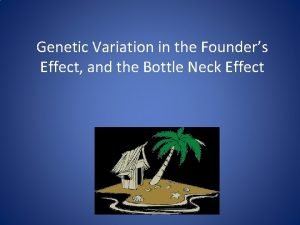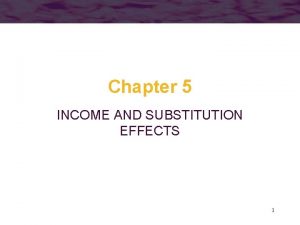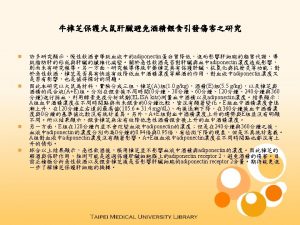Study on the hypotriglyceridemic effect of Antrodia camphorata


- Slides: 2


Study on the hypotriglyceridemic effect of Antrodia camphorata in rats with high-cholesterol diet n Antrodia camphorata (A. camphorata) is a kind of fungus and parasite on the inner heartwood wall of Cinnamonum kanehirai in wilderness. It is a Taiwan-specific and known traditional Chinese medicine, and has been used to treatment of diarrhea, hypertension, itchy skin, and liver cancer. It also exhibits several biological activities such as antioxidative and hepatoprotective activities. To gain large amount of A. camphorata, several culture technologies have been developed, including solid-state culture and liquid-state fermantation. Peroxisome proliferators activated receptors (PPARs) are transcription factors belonging to the nuclear receptor superfamily, and PPAR? ? subtype has been described as a hypoglycemic agent that increase insulin sensitivity in peripheral tissues, and resulted in reducing blood glucose, insulin and triglyceride levels in insulin resistant animal and in type-2 (non-insulindependent) diabetic patients. In this study, first we want to investigate the possibility of A. camphorata on the hypolipidemic activity by cell-base experiment. Second, we want to compare the hypolipidemic effect between solid-state culture and wild fruiting body of A. camphorate in animals. The results showed that water extracts of wild fruiting bodies were able to increase the PPAR? ? transactivation activity by transfection of PPAR? ? reporter plasmid. Base on the cell experiment, we have examined the hypolipidemic effect of solidstate culture and wild fruiting body of A. camphorata in SD rat fed with high cholesterol diet. The results showed that wild fruiting body was able to decrease the triglyceride and glucose levels, but could not affect the cholesterol level. On the other hand, solid-state culture of A. camphorate had no significant effect on the blood levels of triglyceride and cholesterol. These results suggest that wild fruiting body may exhibit a hypotriglyceridemic effect, and has more effect than solid-state culture of A. camphorate on the hypotriglyceridemic activity.



